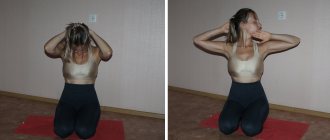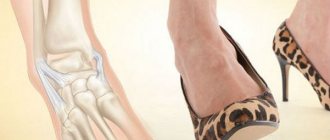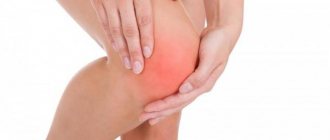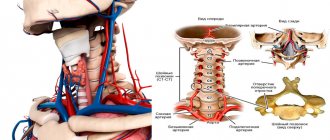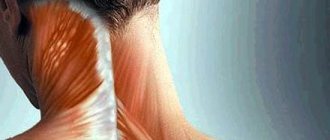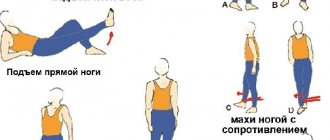Contraction and stretching of muscles provides us with the ability to move and maintain the necessary body position in space. Bundles of muscle fibers are attached to ligaments. They resemble springs or cords with a certain elasticity coefficient. There are flexor muscles and those that help to straighten the limb. At the moment of excessive stretching, when the load exceeds the safety margin of the fiber, both microtear of individual fibers of the bundle and complete separation of the muscle from the ligament with loss of functionality can occur. Most often, sprains of varying degrees of severity accompany athletes and manual workers employed in warehouses and production, where they have to move a lot of weight at a fast pace without safety equipment. The duration of treatment can last from 10 to 30 days in case of mild to moderate muscle strain and up to 6 months in case of severe injury.
What is a muscle strain? Causes of muscle strain
A muscle strain is a traumatic injury to muscle fibers or the joint between muscle and tendon. A muscle sprain occurs when there is excessive tension in the muscles or ligaments, or when the muscles are overstrained as a result of loads higher than those allowed for the body.
Muscle strains can occur even in everyday situations - heavy physical work, inept lifting of weights, or being in an unusual or uncomfortable position for a long time can cause muscle problems. Most people pull their back or neck muscles when they try to lift something heavy without bending their knees and keeping their back straight. The muscles in your legs can be pulled if you strain too much while running, walking, jumping, or squatting with a heavy dumbbell without warming up first. In this case, the muscles of the back of the lower leg (calf) are most often stretched. Usually such injuries are accompanied by convulsions.
But muscles are especially often injured when performing various physical exercises and sports. A muscle strain occurs either as a result of too strong muscle contraction, for example, during unexpected sudden movements, or due to abnormal muscle function, such as a sudden change in the direction of the load on the muscle. Muscle strains can occur when performing stretching or flexibility exercises, especially with a partner. Often, muscle strain can occur during a sharp transition from one direction of movement to the opposite, during sudden movements in general, and also if the movements of body parts are uncoordinated. Accidental collisions and falls can also cause a muscle strain .
Factors contributing to muscle strain are a poorly developed muscle corset, as well as low daily physical activity of a person. Very often, muscle strain occurs due to intense physical activity, disproportionate to capabilities, as well as when the load is placed on unstretched, unheated muscles. Proper warm-up, “warming up” the muscles before performing physical work, reduces the likelihood of a sprain.
Muscle strains and microtears are accompanied by the development of painful muscle spasms.
Soreness indicates damage, so you should stop exercising as soon as you feel pain.
Preventing muscle strain
Since treatment takes a fairly long period, it is important to take care of proper prevention. Preventative measures include the following.
- Thorough warm-up and warm-up of muscles before intense physical exercise and sports competitions. Some novice athletes neglect this simple rule and want to move on to full training as soon as possible. The result is sprains, dislocations and other unpleasant things. Therefore, several minutes of special exercises to increase muscle elasticity should be included in the mandatory training program.
- Wear comfortable sports shoes when running and other active movements. Modern manufacturers produce sneakers for various sports: it is important to choose your option depending on the physical activity and the conditions in which the classes will be conducted (covering in the gym, range of motion, and so on).
- Lifting weights carefully. It is not recommended to suddenly lift heavy objects, otherwise you may get a strain in the lower back muscles.
- When performing physical exercises, you must follow the correct technique. Beginners are advised to take the help of a professional trainer.
Thus, treatment for a muscle strain includes measures aimed at pain relief and restoration of mobility of the injured limb or other part of the body. A minor injury may go away on its own, but if there is severe pain and swelling that does not go away for a long time, it is recommended to consult a specialist who will prescribe you appropriate medications and prescribe other methods of therapy.
Symptoms of a Muscle Strain
When a muscle is pulled, there is usually pain, swelling, or swelling in the injured area. Hematomas may appear. Pain from a muscle strain can be either mild or very severe, significantly limiting physical activity. If the back muscle is strained, then any additional load - turning or bending - leads to increased pain. Rest, on the contrary, helps reduce pain. As the muscle strain wears off, small scars may appear, so the muscle may not be as flexible or strong after the injury. Often damage to the back muscles is accompanied by the development of swelling of the lumbar region and the appearance of bruises. If the muscle cannot be contracted, consult a doctor; this may be a sign of a tear or rupture of the muscle.
Clinical picture
The first symptom of a muscle strain in the knee or ankle is severe, piercing pain. It is so acute that loss of consciousness is possible. Painful shock is especially dangerous - a pathological condition that threatens the life of the victim due to increased heart rate and a sharp drop in blood pressure. When the fibers break, a click may be heard, reminiscent of the crunch of a dry stick being broken. Irritation of receptors and increased blood flow lead to redness of the skin in the area of damage. Within a few hours, the following symptoms characteristic of muscle strain occur:
- the pain intensifies when trying to lean on the foot;
- leg mobility is limited;
- a subcutaneous hematoma is formed;
Hematoma due to stretching of the thigh muscles.
- sensitivity changes in the area of damage;
- the affected tissues are swollen, the leg increases in size.
With severe, acute inflammation of soft tissues, clinical manifestations of general intoxication of the body are observed. Body temperature rises, dyspeptic and neurological disorders occur. The victim complains of dizziness, weakness, and drowsiness.
The intensity of clinical manifestations varies significantly depending on the degree of injury. When a small number of fibers are torn, the symptoms of muscle strain in the leg are mild or completely absent.
Degrees of muscle stretch
Muscle strains are classified into three levels of severity:
- Moderate muscle strain . Causes mild pain and goes away in a few days.
- The average degree of muscle sprain is associated with weakness of the affected muscle and its painful contraction.
- A complete rupture of the connection between muscle and tendon, manifested by severe pain and the inability to contract the damaged muscle. Swelling, internal bleeding, and bruising may appear in the area of the damaged joint.
What are tendons?
Tendons are bundles of fibrous tissue that attach muscles to bones. They play a vital role in ensuring movement - it is due to the work of tendons that muscle contraction is transmitted to one or another bone, thereby ensuring coordinated operation of the joints and the entire musculoskeletal system.
Some of the tendons are very strong and strong, they can withstand heavy loads, several times the weight of the human body. These include, for example, the tendons of the biceps or calf muscles - the so-called Achilles tendon.
Treatment for muscle strain
Treatment for a muscle strain can take anywhere from a few days to several months, depending on the extent of the damage. It is worth noting that muscle strains —especially back muscles—are often accompanied by ligament sprains. In this case, the recovery period may be delayed.
First aid for muscle strain
Provide rest to the injured muscle. When a muscle is strained, physical exertion and sudden movements should be avoided (complete absence of load on the damaged area is mandatory for 48 hours).
At first it’s cold. If you strain a muscle, apply ice to the injured muscle as soon as possible (for at least 20 minutes) and then apply ice every 4 hours for 48 hours to reduce pain and swelling. Pre-packaged ice packs, cubes wrapped in a damp towel, or even bags of frozen vegetables (like green peas) will work. However, you should not apply ice directly to the skin; it should be protected with a towel or wipes.
Fixation of the injured limb. If bruising occurs, it is necessary to apply an elastic bandage to the damaged area and place the limb in an elevated position to prevent the increase in tissue swelling.
If necessary, when stretching a muscle, you can use medications (analgesics, anti-inflammatory drugs)
Treatment of muscle strain: use of NANOPLAST forte therapeutic patch
After 48 hours, the injured area will benefit from warmth. You can use warm compresses and hot baths. that is very effective and convenient at this stage of treatment for muscle strain . Read more >>>
Thanks to its unique properties, the NANOPLAST forte medical plaster not only relieves inflammation, but also has an analgesic effect, improves blood circulation in the injured area, and accelerates the resorption of hematomas. The course of treatment for a muscle strain usually lasts from 3 to 9 days.
In the case of a mild muscle strain, the healing process takes several days (usually no more than 3-5 days). For more severe sprains, and especially muscle tears, the treatment process will take a longer time (1-6 weeks). In this case, nonsteroidal anti-inflammatory drugs (NSAIDs), usually in tablet form, are used for anti-inflammatory treatment of soft tissue injuries. And here NANOPLAST forte can provide significant help - its use allows you to reduce the dosage and duration of NSAID use. Long-term course use of NANOPLAST forte is possible. Consult a specialist.
After pain and swelling have passed, restorative physical therapy is necessary.
Read more about NANOPLAST forte
First aid
If the ligaments of a joint are damaged, first aid must be provided immediately after the incident, which will prevent the development of complications of the injury and help shorten the recovery period.
The algorithm for providing first aid for such violations is as follows:
- ensuring complete rest and absolute immobility of the damaged area, which will prevent further injury to the joint tissues;
- applying ice to the sore spot to reduce swelling and stop internal bleeding;
- fixing the damaged joint by applying a tight bandage using an elastic bandage or other available materials;
- placing the injured limb above the level of the body, which reduces the manifestations of hematoma and tissue swelling.
In case of severe pain, it is necessary to take painkillers. After providing first aid, a patient with a joint ligament injury must be transported to a medical facility for more detailed diagnosis and qualified treatment of the injury.
1.What is a muscle tear?
The skeletal muscles of our body weave around the bone frame, supporting it in the desired position and providing precise movements. Based on our internal feelings, we can always assess whether the load associated with a particular task is feasible. However, in a number of cases - in extreme cases, in emergency situations, when events develop at lightning speed and protective reflexes are triggered, the load exceeds the allocated resources. The muscles perform excessive work even to their own detriment and, as a result, get injured.
The main properties of our muscle fibers are elasticity when stretched and contractility when changing body position or performing any action. During sudden movements, when falling, jumping, a mismatch may occur in neighboring muscles. They contract simultaneously, whereas normally the contraction of a part of the muscle should be combined with the relaxation of neighboring fibers. This conflict leads to tissues receiving pathological stretching and ruptures.
A must read! Help with treatment and hospitalization!

